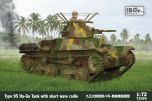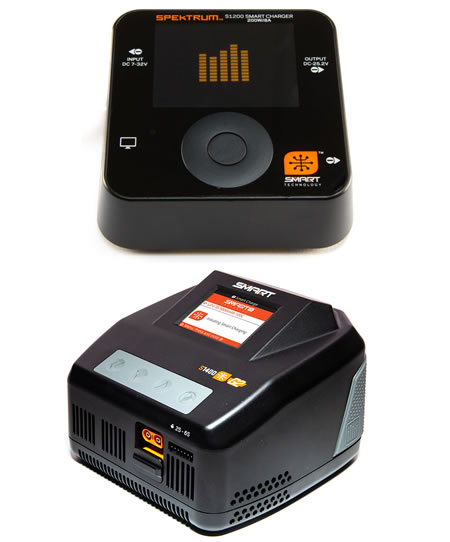IBG Models 1/72 Romanian Barbarossa 1941 Vol.2: IAR.80 early and IAR.80A (2in1) # 72565
 Spread the cost with Paypal Credit
0% for 24 months available on orders over £199
Spread the cost with Paypal Credit
0% for 24 months available on orders over £199
 Spread the cost with Klarna
0% for 24 months available on orders over £199
Spread the cost with Klarna
0% for 24 months available on orders over £199
![]()
The IAR.80 and IAR.80A were Romanian-designed fighter aircraft that played a significant role during Operation Barbarossa in 1941, which marked the Axis invasion of the Soviet Union.
These aircraft, developed by Industria Aeronautică Română (IAR), were the pride of the Romanian Air Force and provided crucial air support during the early stages of the conflict.
IAR.80 Early Version
The IAR.80 was Romania's first domestically designed and built fighter, making its debut in 1940.
It was a monoplane with a robust, all-metal construction, reflecting modern fighter designs of the era.
The aircraft was powered by a 14-cylinder IAR K14 radial engine (a licensed version of the French Gnome-Rhône 14K), providing around 870 horsepower, which gave it respectable performance for a fighter of its time.
Armament: The early version of the IAR.80 was equipped with four 7.92mm FN Browning machine guns, mounted in the wings. While this armament was adequate in 1940, it would quickly be seen as underpowered compared to other contemporary fighters, especially during the intense combat operations of Barbarossa.
Performance: The IAR.80 had a top speed of approximately 316 mph (510 km/h) and could reach altitudes of up to 32,800 feet (10,000 meters), making it competitive in aerial dogfights, though its lack of power at higher altitudes was a known limitation. The aircraft had good maneuverability, making it effective in lower-altitude engagements.
IAR.80A
The IAR.80A was an upgraded version of the original IAR.80, introduced in 1941.
This model featured improved armament and engine performance to address the deficiencies seen in the early version.
Engine: The IAR K14-1000A engine boosted the aircraft’s power output to around 960 horsepower, improving both speed and overall performance. This allowed the IAR.80A to compete more effectively against Soviet fighters, such as the Polikarpov I-16 and Mikoyan-Gurevich MiG-3.
Armament: A key improvement in the IAR.80A was its heavier armament. The aircraft now carried six 7.92mm machine guns, offering increased firepower, especially against lightly armored targets. Later, some versions were even equipped with 20mm cannons for greater punch against Soviet bombers and heavily armed aircraft.
Combat Role: The IAR.80A was primarily used for air superiority and ground attack missions. During Operation Barbarossa, Romanian forces worked closely with the German Luftwaffe, and the IAR.80A was tasked with intercepting Soviet aircraft and providing close air support for Romanian and German ground troops. The IAR.80A’s improved firepower and performance made it a more formidable aircraft in these roles.
Romania in Barbarossa 1941
Romania was a key Axis ally during the early stages of Operation Barbarossa, providing both ground and air support for the German offensive.
The IAR.80 and IAR.80A were among the main fighters employed by the Royal Romanian Air Force (FARR), tasked with protecting Romanian troops and engaging Soviet aircraft.
During the initial phases of Barbarossa, the Romanian Air Force’s IAR.80 and IAR.80A fighters saw action on the Eastern Front, participating in dogfights against the Soviet Air Force.
The aircraft proved effective against early-war Soviet fighters, but as the conflict progressed, they began to encounter more advanced Soviet aircraft, such as the Yak-1 and LaGG-3, which posed greater challenges.
Despite this, the IAR.80A’s maneuverability and the pilot skill of the Romanian airmen made it a respected adversary.
Strengths and Limitations
Strengths: The IAR.80 and IAR.80A were known for their excellent handling characteristics, making them agile and responsive in dogfights.
Their radial engines were reliable and relatively easy to maintain, while the robust airframes were well-suited for rough field operations, a common necessity on the Eastern Front.
Limitations: Despite their strengths, the IAR.80 series fighters were increasingly outclassed as the war progressed, particularly in terms of armament and engine power. The initial machine gun-only armament struggled against newer, more heavily armored Soviet aircraft, and even with the improvements in the IAR.80A, the design began to show its age against more modern fighters like the Yak and LaGG series.
Legacy
While the IAR.80 and IAR.80A did not enjoy the same level of fame as other Axis fighters like the German Messerschmitt Bf 109, they were critical components of Romania's air force and performed admirably in the opening phases of Barbarossa.
The aircraft played a key role in Romania’s contribution to the Axis war effort, proving themselves capable in both fighter and ground attack roles.
In summary, the IAR.80 early version and IAR.80A were Romania's most important fighters during Operation Barbarossa in 1941, combining agility with decent firepower.
However, as the war progressed, these fighters began to struggle against newer and more advanced Soviet designs, leading to the development of further upgrades and new models.
Despite these challenges, the IAR.80 series remains a symbol of Romania’s domestic aircraft industry and its significant contribution to the air war over the Eastern Front.
| SKU | IBG72565 |
|---|---|
| Manufacturer | IBG Models |
| Scale | 1/72 |
| Short Description | IBG Models 1/72 Romanian Barbarossa 1941 Vol.2: IAR.80 early and IAR.80A (2in1) # 72565 |
-
 IBG Models 1/72 PZL P.24A/F Fighter in Turkish Service # 72553Special Price £11.43 was £12.70 Save 10%
IBG Models 1/72 PZL P.24A/F Fighter in Turkish Service # 72553Special Price £11.43 was £12.70 Save 10% -
 IBG Models 1/72 Focke-Wulf Fw-190D-11 Sorau Factory Series # 72533Special Price £20.25 was £22.50 Save 10%
IBG Models 1/72 Focke-Wulf Fw-190D-11 Sorau Factory Series # 72533Special Price £20.25 was £22.50 Save 10% -
 IBG Models 1/72 DAC "Sawn-off" British Armoured Car # 72146Special Price £13.49 was £14.99 Save 10%
IBG Models 1/72 DAC "Sawn-off" British Armoured Car # 72146Special Price £13.49 was £14.99 Save 10% -
 IBG Models 1/72 DAC Mk.I British Armoured Car # 72144Special Price £13.49 was £14.99 Save 10%
IBG Models 1/72 DAC Mk.I British Armoured Car # 72144Special Price £13.49 was £14.99 Save 10% -
 IBG Models 1/72 Semovente M41M da 90/53 - Italian Selfpropelled Gun # 72131Special Price £14.94 was £16.60 Save 10%
IBG Models 1/72 Semovente M41M da 90/53 - Italian Selfpropelled Gun # 72131Special Price £14.94 was £16.60 Save 10% -
 IBG Models 1/72 Type 95 Ha-Go Japanese Tank With Short Wave Radio # 72090Special Price £9.89 was £10.99 Save 10%
IBG Models 1/72 Type 95 Ha-Go Japanese Tank With Short Wave Radio # 72090Special Price £9.89 was £10.99 Save 10% -
 IBG Models 1/72 Scammell Tank Transporter with TRCU30 Trailer and Crusader Mk.I/II (2in1) # 72106Special Price £31.49 was £34.99 Save 10%
IBG Models 1/72 Scammell Tank Transporter with TRCU30 Trailer and Crusader Mk.I/II (2in1) # 72106Special Price £31.49 was £34.99 Save 10% -
 IBG Models 1/72 FV4101 Charioteer British Tank in Finnish Service # 72113Special Price £16.19 was £17.99 Save 10%
IBG Models 1/72 FV4101 Charioteer British Tank in Finnish Service # 72113Special Price £16.19 was £17.99 Save 10% -
 IBG Models 1/72 M11/39 Italian Tank # 72122Special Price £14.94 was £16.60 Save 10%
IBG Models 1/72 M11/39 Italian Tank # 72122Special Price £14.94 was £16.60 Save 10% -
 IBG Models 1/72 90/53 90mm Italian Anti Aircraft Gun # 72159Special Price £12.15 was £13.50 Save 10%
IBG Models 1/72 90/53 90mm Italian Anti Aircraft Gun # 72159Special Price £12.15 was £13.50 Save 10% -
 IBG Models 1/72 I.A.R.80 Romanian Fighter - Gathering Storm 1941 # 72564Special Price £21.24 was £23.60 Save 10%
IBG Models 1/72 I.A.R.80 Romanian Fighter - Gathering Storm 1941 # 72564Special Price £21.24 was £23.60 Save 10% -
 IBG Models 1/72 I.A.R. 81C with Mauser cannons-Great Air battles of 1944 # 72570Special Price £21.24 was £23.60 Save 10%
IBG Models 1/72 I.A.R. 81C with Mauser cannons-Great Air battles of 1944 # 72570Special Price £21.24 was £23.60 Save 10% -
 IBG Models 1/72 Mil Mi-17 in Polish Air Force # 72907Special Price £30.59 was £33.99 Save 10%
IBG Models 1/72 Mil Mi-17 in Polish Air Force # 72907Special Price £30.59 was £33.99 Save 10% -
 IBG Models 1/72 DAC Mk.II British Armoured Car # 72145Special Price £13.49 was £14.99 Save 10%
IBG Models 1/72 DAC Mk.II British Armoured Car # 72145Special Price £13.49 was £14.99 Save 10% -
 IBG Models 1/72 PZL P.11a Hungarian Colours # 72526Special Price £10.98 was £12.20 Save 10%
IBG Models 1/72 PZL P.11a Hungarian Colours # 72526Special Price £10.98 was £12.20 Save 10% -
 IBG Models 1/72 2 in 1: Romanian Barbarossa (PZL P.23A and PZL P.11F in Romanian Service) # 72530Special Price £21.24 was £23.60 Save 10%
IBG Models 1/72 2 in 1: Romanian Barbarossa (PZL P.23A and PZL P.11F in Romanian Service) # 72530Special Price £21.24 was £23.60 Save 10% -
 IBG Models 1/72 Luftwaffe Starter Car And Transport Crate For Engine (Jumo 213 Included) # 72547Special Price £10.80 was £12.00 Save 10%
IBG Models 1/72 Luftwaffe Starter Car And Transport Crate For Engine (Jumo 213 Included) # 72547Special Price £10.80 was £12.00 Save 10% -
 IBG Models 1/72 PZL P.24A/F Fighter in Turkish Service # 72553Special Price £11.43 was £12.70 Save 10%
IBG Models 1/72 PZL P.24A/F Fighter in Turkish Service # 72553Special Price £11.43 was £12.70 Save 10% -
 IBG Models 1/72 Focke-Wulf Fw-190D-11 Sorau Factory Series # 72533Special Price £20.25 was £22.50 Save 10%
IBG Models 1/72 Focke-Wulf Fw-190D-11 Sorau Factory Series # 72533Special Price £20.25 was £22.50 Save 10% -
 IBG Models 1/72 DAC "Sawn-off" British Armoured Car # 72146Special Price £13.49 was £14.99 Save 10%
IBG Models 1/72 DAC "Sawn-off" British Armoured Car # 72146Special Price £13.49 was £14.99 Save 10% -
 IBG Models 1/72 DAC Mk.I British Armoured Car # 72144Special Price £13.49 was £14.99 Save 10%
IBG Models 1/72 DAC Mk.I British Armoured Car # 72144Special Price £13.49 was £14.99 Save 10% -
 IBG Models 1/72 Semovente M41M da 90/53 - Italian Selfpropelled Gun # 72131Special Price £14.94 was £16.60 Save 10%
IBG Models 1/72 Semovente M41M da 90/53 - Italian Selfpropelled Gun # 72131Special Price £14.94 was £16.60 Save 10% -
 IBG Models 1/72 Type 95 Ha-Go Japanese Tank With Short Wave Radio # 72090Special Price £9.89 was £10.99 Save 10%
IBG Models 1/72 Type 95 Ha-Go Japanese Tank With Short Wave Radio # 72090Special Price £9.89 was £10.99 Save 10% -
 IBG Models 1/72 Scammell Tank Transporter with TRCU30 Trailer and Crusader Mk.I/II (2in1) # 72106Special Price £31.49 was £34.99 Save 10%
IBG Models 1/72 Scammell Tank Transporter with TRCU30 Trailer and Crusader Mk.I/II (2in1) # 72106Special Price £31.49 was £34.99 Save 10% -
 IBG Models 1/72 FV4101 Charioteer British Tank in Finnish Service # 72113Special Price £16.19 was £17.99 Save 10%
IBG Models 1/72 FV4101 Charioteer British Tank in Finnish Service # 72113Special Price £16.19 was £17.99 Save 10% -
 IBG Models 1/72 M11/39 Italian Tank # 72122Special Price £14.94 was £16.60 Save 10%
IBG Models 1/72 M11/39 Italian Tank # 72122Special Price £14.94 was £16.60 Save 10% -
 IBG Models 1/72 90/53 90mm Italian Anti Aircraft Gun # 72159Special Price £12.15 was £13.50 Save 10%
IBG Models 1/72 90/53 90mm Italian Anti Aircraft Gun # 72159Special Price £12.15 was £13.50 Save 10% -
 IBG Models 1/72 I.A.R.80 Romanian Fighter - Gathering Storm 1941 # 72564Special Price £21.24 was £23.60 Save 10%
IBG Models 1/72 I.A.R.80 Romanian Fighter - Gathering Storm 1941 # 72564Special Price £21.24 was £23.60 Save 10% -
 IBG Models 1/72 I.A.R. 81C with Mauser cannons-Great Air battles of 1944 # 72570Special Price £21.24 was £23.60 Save 10%
IBG Models 1/72 I.A.R. 81C with Mauser cannons-Great Air battles of 1944 # 72570Special Price £21.24 was £23.60 Save 10% -
 IBG Models 1/72 Mil Mi-17 in Polish Air Force # 72907Special Price £30.59 was £33.99 Save 10%
IBG Models 1/72 Mil Mi-17 in Polish Air Force # 72907Special Price £30.59 was £33.99 Save 10% -
 IBG Models 1/72 DAC Mk.II British Armoured Car # 72145Special Price £13.49 was £14.99 Save 10%
IBG Models 1/72 DAC Mk.II British Armoured Car # 72145Special Price £13.49 was £14.99 Save 10% -
 IBG Models 1/72 PZL P.11a Hungarian Colours # 72526Special Price £10.98 was £12.20 Save 10%
IBG Models 1/72 PZL P.11a Hungarian Colours # 72526Special Price £10.98 was £12.20 Save 10% -
 IBG Models 1/72 2 in 1: Romanian Barbarossa (PZL P.23A and PZL P.11F in Romanian Service) # 72530Special Price £21.24 was £23.60 Save 10%
IBG Models 1/72 2 in 1: Romanian Barbarossa (PZL P.23A and PZL P.11F in Romanian Service) # 72530Special Price £21.24 was £23.60 Save 10% -
 IBG Models 1/72 Luftwaffe Starter Car And Transport Crate For Engine (Jumo 213 Included) # 72547Special Price £10.80 was £12.00 Save 10%
IBG Models 1/72 Luftwaffe Starter Car And Transport Crate For Engine (Jumo 213 Included) # 72547Special Price £10.80 was £12.00 Save 10% -
 IBG Models 1/72 PZL P.24A/F Fighter in Turkish Service # 72553Special Price £11.43 was £12.70 Save 10%
IBG Models 1/72 PZL P.24A/F Fighter in Turkish Service # 72553Special Price £11.43 was £12.70 Save 10% -
 IBG Models 1/72 Focke-Wulf Fw-190D-11 Sorau Factory Series # 72533Special Price £20.25 was £22.50 Save 10%
IBG Models 1/72 Focke-Wulf Fw-190D-11 Sorau Factory Series # 72533Special Price £20.25 was £22.50 Save 10% -
 IBG Models 1/72 DAC "Sawn-off" British Armoured Car # 72146Special Price £13.49 was £14.99 Save 10%
IBG Models 1/72 DAC "Sawn-off" British Armoured Car # 72146Special Price £13.49 was £14.99 Save 10% -
 IBG Models 1/72 DAC Mk.I British Armoured Car # 72144Special Price £13.49 was £14.99 Save 10%
IBG Models 1/72 DAC Mk.I British Armoured Car # 72144Special Price £13.49 was £14.99 Save 10% -
 IBG Models 1/72 Semovente M41M da 90/53 - Italian Selfpropelled Gun # 72131Special Price £14.94 was £16.60 Save 10%
IBG Models 1/72 Semovente M41M da 90/53 - Italian Selfpropelled Gun # 72131Special Price £14.94 was £16.60 Save 10% -
 IBG Models 1/72 Type 95 Ha-Go Japanese Tank With Short Wave Radio # 72090Special Price £9.89 was £10.99 Save 10%
IBG Models 1/72 Type 95 Ha-Go Japanese Tank With Short Wave Radio # 72090Special Price £9.89 was £10.99 Save 10%





























